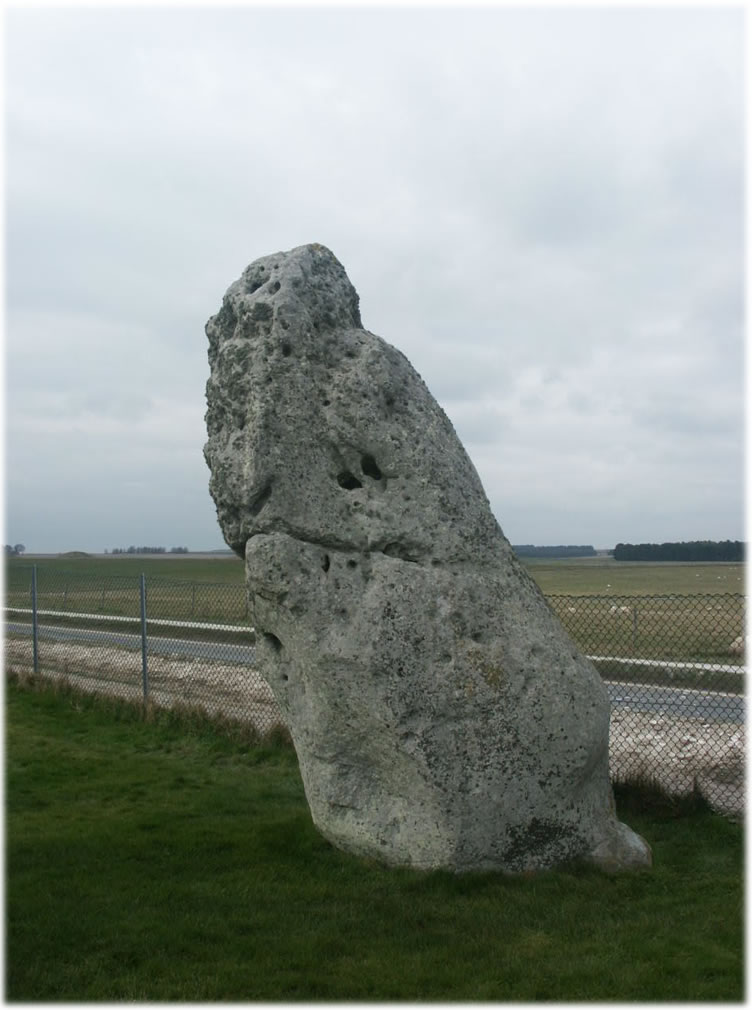Gerald Hawkins, Astronomer and Tourist, Makes a Guess
Hawkins started with an observation, discovered a few hundred years ago: on the first day of summer—the longest day of the year—the Sun will rise just over this stone when observed from the central area.
Indicate the stone on the far right with a pointer.
VISUAL 5 (still): Heelstone Closeup. Fade on and scale up image of the Heelstone closeup.
That stone is called the “Heel Stone” (a modern name like “Stonehenge” itself). Having one alignment is not too surprising. It could be coincidence. On the other hand, many modern churches and temples have been aligned to that direction on the horizon, since many people have felt that the longest day of the year is of special importance. This day has marked the midpoint of many calendars and the first day of others.
One alignment does not go far towards explaining all these massive stones. Hawkins’ inspiration was to ask himself the question: “If one stone at Stonehenge marks one astronomical alignment, the sunrise on the longest day of the year, might the other stones have marked other astronomical events?”
[Use the next sentence if your planetarium shows precession.]
To do this, we must first go back in time, about 3500 years ago, when Stonehenge was completed.

First, can you find the Big Dipper?
[Take any answers.]
It looks like a big pot, and points you to a very important star, especially if you ever get lost.
Does anyone have an idea what star I might mean?
[The North Star.]
Here it is.
Indicate North Star. And it’s always in the North, today, that is. In the distant past, when Stonehenge was completed, there was no North Star. DIGITAL EFFECT: Fade on the Big Dipper After the audience finds the Big Dipper in the sky, fade on an outline of the Big Dipper. DIGITAL EFFECT: End Pot Fade off Pot image. DIGITAL EFFECT: Pole/Time On Highlight Polaris and cardinal points, and turn on the clock on the dome. DIGITAL EFFECT: Go to 1500 BC Run precession. Go to 1500BC, on date 10/31 at midnight. 10/31 was chosen as a non-solstice date, with a Quarter Phase moon. DIGITAL EFFECT: End Time/Pole Fade off planetarium clock and cardinal points. Unhighlight Polaris.

